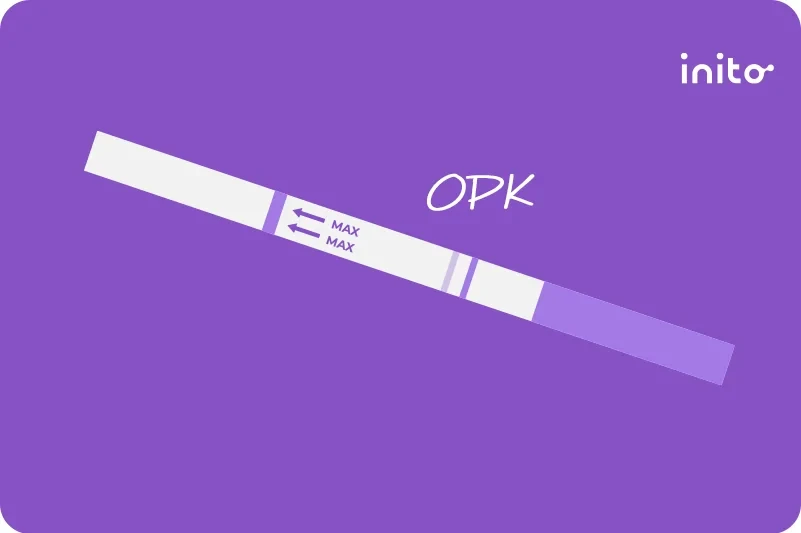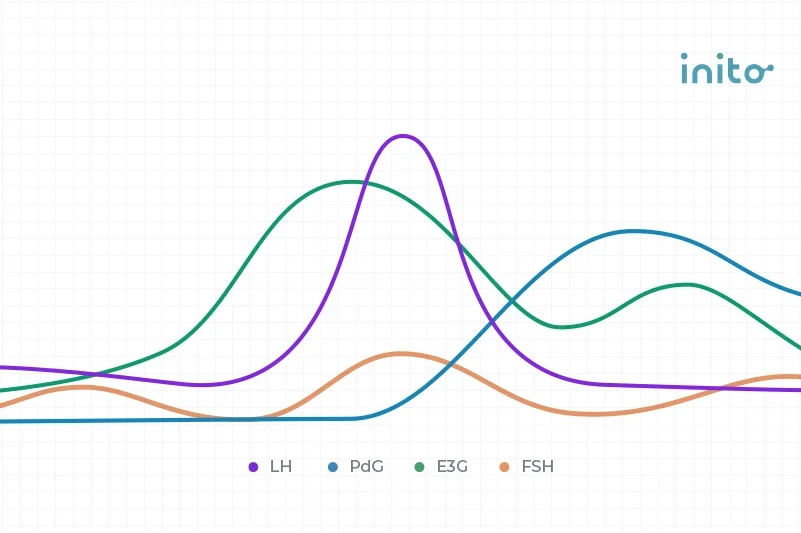Content table
You’ve probably seen women all over the internet modifying their diet according to their menstrual cycle – from eating iron-rich foods during menstruation to low glycemic carbs during ovulation.
Is this another social media fad, or is there some science to back up these practices?
Currently, research is limited on whether altering your diet around your menstrual cycle is beneficial. But if it makes you feel good, then go for it! There’s no harm in trying it out.
In this article, we will explore how modifying your dietary habits during your luteal phase may positively benefit you. We will cover what to eat during the luteal phase and what you should avoid.
To better understand what dietary changes to make in the luteal phase, we first need to review what happens during this time.
Key Takeaways
- Cycle syncing involves making lifestyle modifications that align with your menstrual cycle. This includes modifying your dietary choices.
- Eating certain foods during your luteal phase may help you regulate your menstrual cycle and reduce PMS symptoms.
- Foods to eat during the luteal phase should be high in specific nutrients like vitamin B6, magnesium, calcium, and protein.
- During your luteal phase, avoid foods that are high in refined carbohydrates and sugar. Limit or avoid alcohol and caffeine.
What Changes Happen in the Luteal Phase?
The luteal phase includes the days following ovulation until your next period begins. This menstrual phase is when your body ramps up progesterone production to prepare for a potential pregnancy.
Here is the breakdown of the four phases of your menstrual cycle to better illustrate this timeline:
- Menstruation: This marks the beginning of your menstrual cycle. The uterine lining sheds, resulting in your menstrual period.
- Follicular phase: Your brain secretes Follicle-Stimulating Hormone (FSH) to stimulate your ovaries to grow follicles. Each of these follicles contains an egg. These follicles also secrete estrogen, increasing estrogen levels.
- Ovulation: One dominant follicle releases a mature egg in response to a surge in LH (Luteinizing Hormone). The mature egg is then swept into your fallopian tube to be potentially fertilized by sperm.
- Luteal phase: The corpus luteum (the structure left behind by the dominant follicle) secretes progesterone to prepare for a potential pregnancy. Progesterone levels start rising, allowing your uterine lining to build and the embryo to implant. But if pregnancy has not occurred, progesterone levels fall and your next period begins.
Read more: Progesterone and Early Pregnancy
About halfway through the luteal phase, your progesterone levels peak. Due to high progesterone levels, you may experience some of the following symptoms:
- Breast tenderness
- Bloating
- Headaches
- Mood swings
- Appetite changes
- Sleep disturbances
Certain foods can help with some of these symptoms. But are there other reasons you might consider changing your diet according to your cycle?
Why Should You Eat According to Your Menstrual Cycle?
Adjusting your diet to sync with your cycle may help you feel more in tune with your body. There’s not much scientific evidence to prove the benefits of cycle syncing, but many women report feeling better when they do this.
Modifying your diet according to your hormonal fluctuations may help you feel better and more in control. Since your mood, appetite, energy levels, emotions, and cognitive function vary throughout the month, a change in diet can help you balance these fluctuations.
For instance, switching up your diet can decrease PMS symptoms like headaches, mood swings, changes in appetite, bloating, and tummy pain.
If you want to start eating according to your menstrual cycle, you’ll need to figure out when you ovulate. Remember – the luteal phase begins after ovulation.
One way to track your menstrual cycle to determine your fertile window and ovulation day is to use the Inito Fertility Monitor.
Inito measures LH, estrogen, FSH, and PdG to track and confirm ovulation.
It allows you to monitor your progress with cycle syncing using the Inito app. By tracking your signs and symptoms, you can identify your cycle phases and patterns in your mood, appetite, and energy levels!
If you want to get started with cycle syncing you probably want to know what foods to eat during the luteal stage. Keep reading to find the best foods to try!
Know your chances of Ovulation!
Take our ovulation quiz to understand how your hormone patterns and
lifestyle factors may affect your chances of ovulating
What Are the Best Foods for the Luteal Phase?
The best foods to eat in your luteal phase are high in protein, complex carbs, vitamin B6, magnesium, and calcium. These vitamins and nutrients will help regulate your progesterone levels and reduce Premenstrual Syndrome (PMS) symptoms.
Here’s why:
The rise in your progesterone levels in your luteal phase can make you feel hungrier. Additionally, since your energy requirements increase during your luteal phase, you feel compelled to eat foods high in protein and carbohydrates.
To ensure you snack on food that meets cravings but is nutrient-dense, check out this table:
Lean protein | Whole carbohydrates |
Poultry Fish Eggs Tofu Beans Lentils Chickpeas | Whole grains like barley, rye, quinoa, brown rice, and millet Whole wheat bread Whole wheat pasta Oats
|
You can see that the recommended protein and carbohydrate sources are minimally processed. The cravings may come in strong, but try not to give in to the temptation to eat highly palatable and processed foods.
As mentioned, your progesterone levels fluctuate during your luteal phase, rising and falling. Eating foods that help regulate your progesterone is beneficial during this stage. Therefore, include foods rich in magnesium and vitamin B6 to help regulate progesterone levels.
Additionally, when your progesterone levels fall toward the end of the luteal phase, you may experience PMS. To reduce premenstrual symptoms, focus on eating foods high in magnesium and calcium.
Here are some examples of foods high in magnesium, vitamin B6, and calcium:
Magnesium-rich foods | Vitamin B6-rich foods | Calcium-rich foods |
Dark chocolate Pumpkin seeds Almonds Cashews Avocadoes Bananas Black beans Spinach | Salmon Tuna Chicken Turkey Beef Eggs Carrots Sweet potato Spinach Chickpeas Bananas | Cheese Yogurt Beans Lentils Almonds Dark leafy greens Tofu Edamame Milk |
Another thing to keep in mind is that your serotonin levels may take a dip during your luteal phase. This is why you may have heightened feelings of depression or low mood. Focus on eating foods that boost serotonin to counteract this.
Here are some examples:
- Eggs
- Dairy
- Tofu
- Leafy greens
- Pineapple
- Kiwi
- Dark chocolate
Remember – Nutrition plays a role in hormone health and fertility, but there’s no scientific correlation between your menstrual cycle and what you eat.
A good rule of thumb is to make healthy choices throughout your menstrual cycle and find healthy alternatives to hyperpalatable foods.
Try seed cycling
Seed cycling is a natural remedy that involves consuming specific seeds at various stages of your menstrual cycle. It helps balance hormones and uimprove overall reproductive health.
Here are a couple of recommendations for seeds to include:
- Sesame seeds: These are rich in zinc (which increases progesterone) and lignans (which regulate estrogen levels)
- Sunflower seeds: These are a great source of vitamin E which may ease PMS symptoms and improve progesterone levels
Read more: Seed Cycling: What It Is, Benefits & How it Impacts Fertility
Which Foods Should Be Avoided in the Luteal Phase?
Just as there are foods to add to your diet, there are foods you’ll want to avoid. Since your luteal phase can be accompanied by symptoms such as decreased mood, decreased energy, and disturbed sleep, you should avoid foods that could worsen these symptoms.
We know how tempting it can be to reach for convenient and highly palatable foods when your cravings are high! But it’s best to consume such foods in moderation to feel your best and have a healthy luteal phase.
Here are some foods to avoid in the luteal phase:
- Refined carbohydrates
- Conventional meat and dairy
- Alcohol
- Caffeine
- Added sugars
- Processed foods
Here are some healthy swaps when you’re knee-deep in a gnarly craving. Plus an explanation for why you’re craving specific foods so much:
What you’re craving | Why you’re craving it | What to do about it |
Potato chips/salty foods | You may be dehydrated or lack electrolytes. | Stay hydrated with water, coconut water, or fluids with added electrolytes.
|
Sweets | You may be skipping meals or not eating as frequently as you should. This can cause your blood glucose to fluctuate.
Stress and sleep deprivation can also cause you to crave sugar. | Eat smaller, more frequent meals throughout the day. Make sure your meals and snacks always include a protein source. Try eating fruit to satisfy your sweet tooth. Try eating fruit to satisfy your sweet tooth. A couple of great options include Greek yogurt with fruit and granola or an apple with peanut butter. |
Fried foods | Your diet may lack omega-3s. | Eat fatty fish like tuna and salmon. Eat foods rich in healthy fats like walnuts, flax seeds, chia seeds, avocado and fortified foods. Try air-frying or baking foods if you’re still craving that satisfying crunch from fried foods. |
As always, it’s all about moderation. Don’t restrict your diet to the point where you feel miserable. Use the tips above to practice mindfulness and feel your best during your luteal phase.
So how do you know if you should modify your diet according to your cycle?
Who Benefits From Eating According to Their Cycle?
Anyone can benefit from eating according to their cycle. You may experience more drastic changes if you have certain conditions.
You may experience significant benefits from cycle syncing if you have one of the following conditions:
- Hormonal imbalances such as PCOS or a thyroid disorder
- Weight issues
- Chronic stress or fatigue
You may also benefit if you’re trying to conceive. This is because a nutritious diet can help alleviate PMS symptoms and promote hormonal health, which may indirectly support your TTC journey.
So, if you’ve tried other methods while TTC with no success, give it a shot!

FAQs
You can eat foods high in vitamin B6, magnesium, and calcium to regulate your progesterone levels and decrease PMS symptoms. Focus on protein-rich meals and snacks to avoid overeating on processed foods and sweets.
Foods that are processed and high in sugar should be limited during the luteal phase. Other substances to avoid include caffeine and alcohol. These foods and substances can exacerbate symptoms common in the luteal phase like digestive issues, depressed mood, and decreased energy.
During the luteal phase, your body expends more energy. One study showed women in their luteal phase burned 4.3% more energy at rest than women in their follicular phase. This does not necessarily equate to a need for more calories, however. You likely don’t need to intentionally up your calorie intake during your luteal phase.
Was this article helpful?
- Beneficial Role of Calcium in Premenstrual Syndrome: A Systematic Review of Current Literature
- Evaluating the effects of vitamin D and vitamin E supplement on premenstrual syndrome: A randomized, double-blind, controlled trial
- Menstrual cycle and appetite control: implications for weight regulation
- Cognitive, sensory, and emotional changes associated with the menstrual cycle: a review
- Progesterone for premenstrual syndrome
- Changes in macronutrient, micronutrient, and food group intakes throughout the menstrual cycle in healthy, premenopausal women
- Activities of Serum Magnesium and Thyroid Hormones in Pre-, Peri-, and Post-menopausal Women
- Omega-3 Fatty Acids
- Luteal blood flow and luteal function
- Salt need needs investigation
- Food craving, cortisol and ghrelin responses in modeling highly palatable snack intake in the laboratory
- The impact of sleep deprivation on food desire in the human brain












